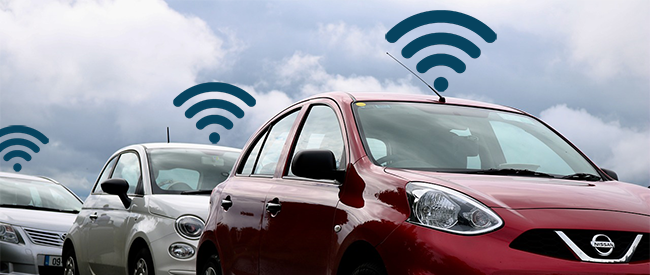
How Siri, Alexa, and Google Home Might Shape Your Car’s Dashboard
For several weeks this summer, I swapped vehicles. Instead of driving my 2008 Dodge Avenger, I was driving a much more recent Dodge Journey, one equipped with Bluetooth integration.
When I switched back to Caroline (never trust people who don’t name their cars), it meant letting go of that Bluetooth integration. Instead, I’m back to plugging my phone into an aux jack to access my podcasts, music, and phone calls.
That’s a big step backward — while the rest of the auto industry is moving forward.
Increasingly, automakers are realizing that connected cars are where consumer demand will take us.
Cars Became Our Most Connected Devices in 2016
In 2016, net adds of connected cars (32%) rose above net adds of smartphones (31%), according to Kumar Abhimanyu of TechCrunch.
Put another way, last year there were more new cars connecting to the Internet than new smartphones.
And the trend will only continue. “At some point within the next two to three years,” Abhimanyu writes, “consumers will come to expect car connectivity to be standard.”
This is a huge development for a couple reasons. For one thing, it shows that people are increasingly inclined to access the Internet through their car’s dashboard.
Moreover, for those of us keeping an eye on the advancement of driverless cars, this is an indicator that mobile carriers like AT&T could be working with Ford, GM, and other automakers almost as heavily (if not more so) than they work with companies producing smartphones.
“Okay, Google, Directions to…”
Even more so than mobile carriers, we expect to see intelligent personal assistants like Siri, Alexa, and Google Home dominate the new car game.
It’s more likely for a variety of reasons that we’ll continue to see developments from Apple, Amazon, and Google shaping the way automakers approach dashboards — even if Apple is bowing out of developing the car themselves.
We can’t say for sure whether folks will immediately embrace this new wave of car connectivity. They may continue to utilize the Internet in their vehicle mainly through the tether of their smartphone.
Maybe consumers will be slow to configure Internet preferences on their car when their phone already knows what they like. Or maybe it’ll simply be cheaper to connect through your phone for a time.
However, for drivers and passengers to fully benefit from autonomous vehicles, car connectivity is a necessity. If vehicles can’t communicate with each other, we’ll lose out on the immense potential for increased efficiency (and safety).
The key thing to watch here is whether automakers like Ford want to invest time and capital into their own vehicle interfaces or whether they’ll choose to collaborate with tech giants to bring Siri, Alexa, or Google Home along for the ride.
Since these companies are already partnering with each other in the race for driverless technology, it makes sense that you could soon be asking Alexa how to get downtown — or, perhaps, asking her to simply chauffeur you.
Time Will Tell
Overall, we as consumers will end up with the best result possible if mobile carriers, automakers, and Silicon Valley can work together. But things aren’t likely to come cheap unless several companies are in the fray.
There are plenty of developments we still need to watch for. In the meantime, it’s fun to muse on how all of these advancements could come together to create intelligent, responsive, and — yes — driverless cars.
Behind on the discussion about autonomous vehicles?
Read our posts on the benefits of self-driving cars, how they will bring people to a dealership, and the biggest hurdles yet to be tackled.
Subscribe to our blog for more updates on automotive industry innovation and self-driving car competitors!



![Human vs AI A/B Test [Spoiler Alert: Humans Win!]](https://9clouds.com/wp-content/uploads/2024/02/Volvo-dealership-1-600x388.png)


